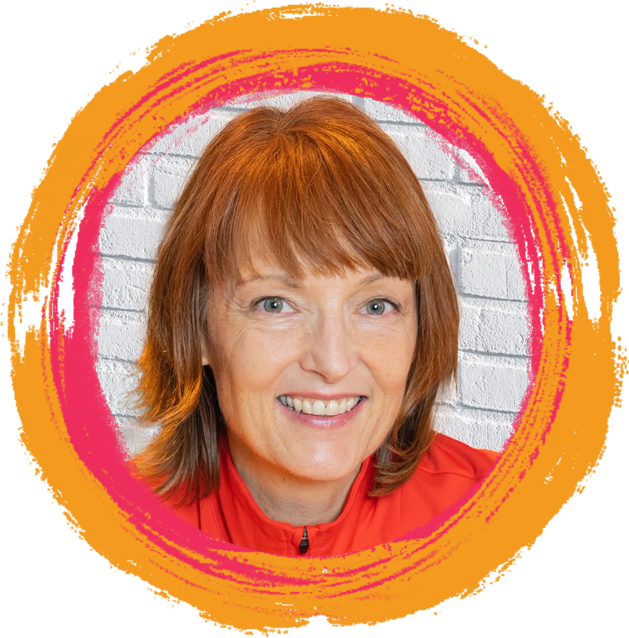How to Manage Life Admin as a Multi-passionate Portfolioist with ADHD
Let’s talk about managing the many to-do’s & day-to-day tasks (aka life admin) in our lives.
As a life design coach and professional organizer working with high-performers, finding systems and structures to support the admin of our busy portfolio lives is HARD. Throw in ADHD and this gets really hard…I speak from experience!
Life admin overwhelms us with its relentlessness and urgency. In order to stay productive, focused, and creative (key multipassionate traits) we have to manage it.
In this interview except with author, writer, and podcast host Kate Hanley, we talk about:
how clutter - mental and physical - get in the way of successfully taking care of life admin tasks
why it can be so frustrating to lose, misplace, or put off the items on our to-do lists
how to minimize the stress and overwhelm to get things done
why pencils are essential
Why Clutter Is About More Than Just Stuff
Kate: Frankly, life admin just makes me want to lie down. I mean, I’ve figured out some stuff, but there’s still so much further I could go.
Jessica: Of course you have! Most people have some strategies in place, but we’re becoming more overhwlemd by ALL THE THINGS we have to do to and ALL THE STUFF we need to do them. It’s a lot of clutter.
Kate: OK, so you’re a professional organizer, which most people think means you help people organize their stuff, as in actual physical possessions. But being organized relates to more than just clutter, correct?
Jessica: Absolutely! Often when we think of decluttering and organizing, we think about cleaning out the closet, unpacking boxes from the basement, or asking yourself if your belongings spark joy (thanks to Marie Kondo!), which are helpful for sure.
However, in most cases, our physical clutter, chaos, and mess reflect what’s going on inside of us - our minds are cluttered too!
The external clutter reflects the internal and vice versa. They aren’ separate, which means decluttering involves both physical and mental work.
Before we can truly declutter, organize, and sustain change (so hard thanks to our emotional attachments!), our inner self & mindset need to be in the game.
Start Getting Organized by Knowing Your WHY
Kate: Makes sense, but how do you get your mindset in the game?
Jessica: You must start with your big WHY. Why bother doing the work? It’s hard work, so answering this is key. This is step 1 in my 5-step T.U.D.O.S. Technique
Knowing your WHY is essential. Without this clarity, "I’m too busy/overwhelmed/unmotivated” will take over and you won’t do what you set out to do.
Kate: What do we stand to gain by devoting some time and energy to getting our life admin tasks wrangled?
Jessica: So much! Life is full speed ahead for most of us and that means juggling many tasks. Life tasks are always a reality whether it’s appts, bills, mail, calls, kids’ stuff, travel plans - they are not going away anytime soon unless you remove yourself from modern life.
Without systems in place, life feels chaotic, and we react haphazardly to every incoming item, which leaves us feeling perpetually behind, frustrated, and guilty.
By taking time and energy to create a system that works for your lifestyle and personality, you can transform clutter into clarity and then action what matters most.
Determine WHAT You Really Have - The Good, The Bad & Everything In-Between
Kate: All sounds great, but how do we start? I find it hard to get going, I’d rather be doing ANYTHING else!
Jessica: Remember stop 1? Tap into your big why and process. Also, you have to know yourself - digital or paper-based? Weekly or daily updater? Stickies or white board?
After you know your WHY, you’re onto Step 2 of my T.U.D.O.S. Technique – uncover. The WHAT - what do you have. what is excess, what gets in your way, what else?!
You must reveal/list/take out ALL the things to do - appts, calls, returns, forms, etc. – before deciding HOW to do them.
Uncovering is an audit of your to-do’s. By seeing the full range of tasks, you will make better decisions (step 3 in The T.U.D.O.S. Technique)
Whether it’s your to-do’s, your belongings, or your ideas, it’s essential to uncover, and then sort, ALL of it before taking the next step, decision-making.
When you get overwhelmed and unsure, close your eyes and imagine what it FEELS like to succeed.
When you next open your calendar/datebook/journal (or closet!), make decisions that serve that vision.
Deciding What’s Important - Strategies for Multipassionates
Kate: Let’s talk brass tacks. Where are you keeping track of all your life admin tasks? I have a pad of paper where I keep a list, but it feels a little…isolated; like I have to remember to look at it and that’s not good.
Jessica: Again, it’s different for everyone depending on your style, comfort-level, and preference. For most people it’s a combination of digital and paper based.
Whoever said digitizing our documents would eliminate paper does not live in my day-to-day world.
I colour-code my appointments in a digital calendar. Pink is family, which I share with my husband. The other 5 are: working, work appt, personal, & wellness.
I use a weekly paper-based journal for my personal & business to-do’s (Mokani for the last 2 years ) which I love. There are so many great journals to choose from!
I find writing by hand (in pencil) solidifies the info. I get to decide what to include/not include. The downside is info isn’t accessible across devices. I’m working on that!
For this very reason, many of my clients use digital to-do apps like Notes, Notion, Asana, etc. If tech doesn’t distract you or slow you down, go for it.
Wherever you collect ideas (phone, app, sticky note, random recipe), you’ll need to decide if it’s worth keeping.
Deciding is step 3 of the T.U.D.O.S. Technique.
Organizing 101 - A Home for Everything & Everything in it’s Home
Kate: What comes next in the process?
Jessica: Once you know what you want/don’t want, it’s time to put things back in an organized way for YOUR life. To manage clutter consistently, it’s vital to make & take time to put things back where they belong - just like your mother told you to…
Organizing is step 4 of the T.U.D.O.S. Technique and to do that well, you’ll want to create life categories which helps to manage all aspects of your life.
The key to long-term organizational success is to make sure you do T.U.D.O.S. steps 1-3 (think-uncover-decide) BEFORE choosing where and how to organize it all.
Kate: Do you keep your personal appointments, etc. separate from your work to-do’s?
Jessica: All my tasks are included in one weekly 2-page layout in my Clever Fox journal. One side is business, and the other is personal.
Weekly, I review, write down 3 highlights, and carry over anything that still needs doing. If I miss a week, I go back and highlight anything that hasn’t been done.
I will say that having 4-5 weekly work goals and 4-5 weekly personal goals has been a good balance. More than that, I don’t get it done and then feel like I failed.
Kate: And are you writing them in pen?
Jessica: NO! I hardly ever use pens anymore - always sharp pencils with built-in erasers. I also love my orange highlighter…I use colours I like to energize me.
Kate: How about saving time for these things in your schedule--got any tips on how to do that?
Jessica: Schedule it in - block it off in your calendar! I always recommend setting aside 30-60 minutes a week to review your week and plan the next one.
I do this Sunday night or Monday morning. The prompt is built into my journal so it’s easier. I feel very untethered if I don’t review and plan ahead, even if it’s just 15 min.
Scheduling time to add/remove/organize items and to-do’s is the single biggest indicator of success, no matter how many to-do’s you have.
Sustaining your system is step 5 of the T.U.D.O.S. Technique.
By investing time and energy to review and plan, you’ll feel less overwhelm and more control, trust me, it is worth the time up front, nom natter how busy you are!
Sustaining Your “Adulting” as a Multipassionate
Kate: For those of out there who identify as multipassionate, even if we haven’t necessarily heard that term before but we can certainly relate to being interested and pursuing multiple things, is there anything we should know about life admin that will help us tend to all the details that need tending to while we’re also flitting about, pursuing multiple passions?
Jessica: Living a multipassionate portfolio life means embracing a range of projects, passions, and jobs, often simultaneously. The best way to do that is by setting up systems that work FOR YOU. I help by creating systems to support multiple projects and passions in a way that minimizes overwhelm and maximizes focus.
Suggestions: Set up ready-to-go stations with all your supplies, contain all project materials in one place (folder/bin/box/drawer), and use time blocking to fit it all in.
There will always be lots of to do’s on your list - it is the nature of who you are! Successful life admin - or adulting - is not about changing who we are, it’s about finding the clearest and simplest ways to support our vision.
Managing all facets of life, and still respecting creativity, freedom of choice, and multipassionate living, are central to my mission of helping fellow portfolioists thrive.
NEXT STEPS
Listen to the audio version of my chat with Kate Hanley on her How to Be a Better Person podcast
Start where you are at and adult away following my 5-step T.U.D.O.S. Technique
Get help creating a workable and effective life admin plan by working with me

